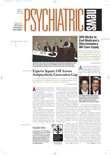Autism is more prevalent than it was a few years ago, epidemiological studies have revealed. But does an increased prevalence also mean an increase in autism incidence—in short, an “autism epidemic”?
Probably not, Judith Grether, Ph.D., a research scientist with the California Department of Health Services in Oakland, reported at an Autism Society of America conference in 2001. She and her colleagues found that between 1987 and 1994 the number of children in California diagnosed with autism increased, yet there was a comparable decrease in the number of children diagnosed with mental retardation of no known cause.
“Earlier referral and diagnosis offer opportunities for earlier intervention, and studies have also demonstrated the efficacy of early intervention.”
“So there was probably a shift in diagnosis during those years, not an increase in autism,” she said (Psychiatric News, September 7, 2001).
Now Canadian psychiatrist Eric Fombonne, M.D., a professor of psychiatry at McGill University, and a British developmental pediatrician, Suniti Chakrabarti, M.D., former director of the Child Development Center in Stafford, England, have come to a similar conclusion.
Results of their study appeared in the June American Journal of Psychiatry.
During the past four years or so, studies focusing not just on autism, but on the whole spectrum of pervasive developmental disorders have yielded a prevalence rate of about 60 per 10,000 children. One of these studies was conducted by Fombonne and Chakrabarti on about 16,000 children born in Stafford from 1992 to 1995. They found a prevalence rate of 63 per 10,000. So they decided to repeat their study in the same geographic area using the same study design, but on a more recent birth cohort to see whether the prevalence rate had changed since their first investigation. If the prevalence rate turned out to be higher than before, they reasoned, it would suggest an increase in the incidence of the disorders.
In this study, they focused on some 11,000 children born in Stafford from 1996 to 1998. As in their previous study, children were scrutinized for pervasive developmental disorders in four stages. The stages were (1) an initial screening of the target population and referral of children with developmental or behavioral problems; (2) an assessment of referred children by a developmental pediatrician or a child development team, leading to the identification of children with moderate or severe developmental problems or unsatisfactory progress; (3) a two-week multidisciplinary assessment and medical investigation of those children found to have moderate or severe developmental or behavioral problems or unsatisfactory progress, leading to the identification of those suspected of having a pervasive developmental disorder; (4) assessment of those suspected of having a pervasive developmental disorder with standard diagnostic instruments such as the Autism Diagnostic Interview–Revised and the Wechsler Preschool and Primary Scale of Intelligence.
Diagnoses were made using DSM-IV criteria for autistic disorder and other pervasive developmental disorders.
This evaluation process led to the identification of 27 children with a pervasive developmental disorder not otherwise specified, 24 children with autistic disorder, 12 children with Asperger's disorder, and one child with childhood disintegrative disorder. Thus, a diagnosis of a pervasive developmental disorder was confirmed in 64 children, yielding a combined prevalence of pervasive developmental disorders of 59 per 10,000.
The researchers then compared this study and their previous one on five diagnostic categories—pervasive disorder not otherwise specified, autistic disorder, Asperger's disorder, childhood disintegrative disorder, and all pervasive developmental disorders. They found no significant differences between the two samples in any of these categories.
“If the prevalence figure for our new sample had increased from that in the previous study, that might have pointed toward an increase in the incidence of pervasive developmental disorders, consistent with the various claims of an `epidemic of autism,'” the researchers wrote in their study report. “We did not find such an increase, and there was no statistical difference between the two prevalence rates, not even a trend in that direction. It can therefore be safely concluded that, in this area and for children born over the period 1992 and 1998, there was no evidence of a... change in the incidence of pervasive developmental disorders.”
Their follow-up study also revealed a marked lowering of the age of referral for, and diagnosis of, pervasive developmental disorders since the first study. “We were pleased to see that,” Fombonne told Psychiatric News, “because earlier referral and diagnosis offer opportunities for earlier intervention, and studies have also demonstrated the efficacy of early intervention.”
Their survey was financed by the First Community Health Trust and the South Staffs Healthcare National Health Service Trust.
Am J Psychiatry 2005 162 1133
